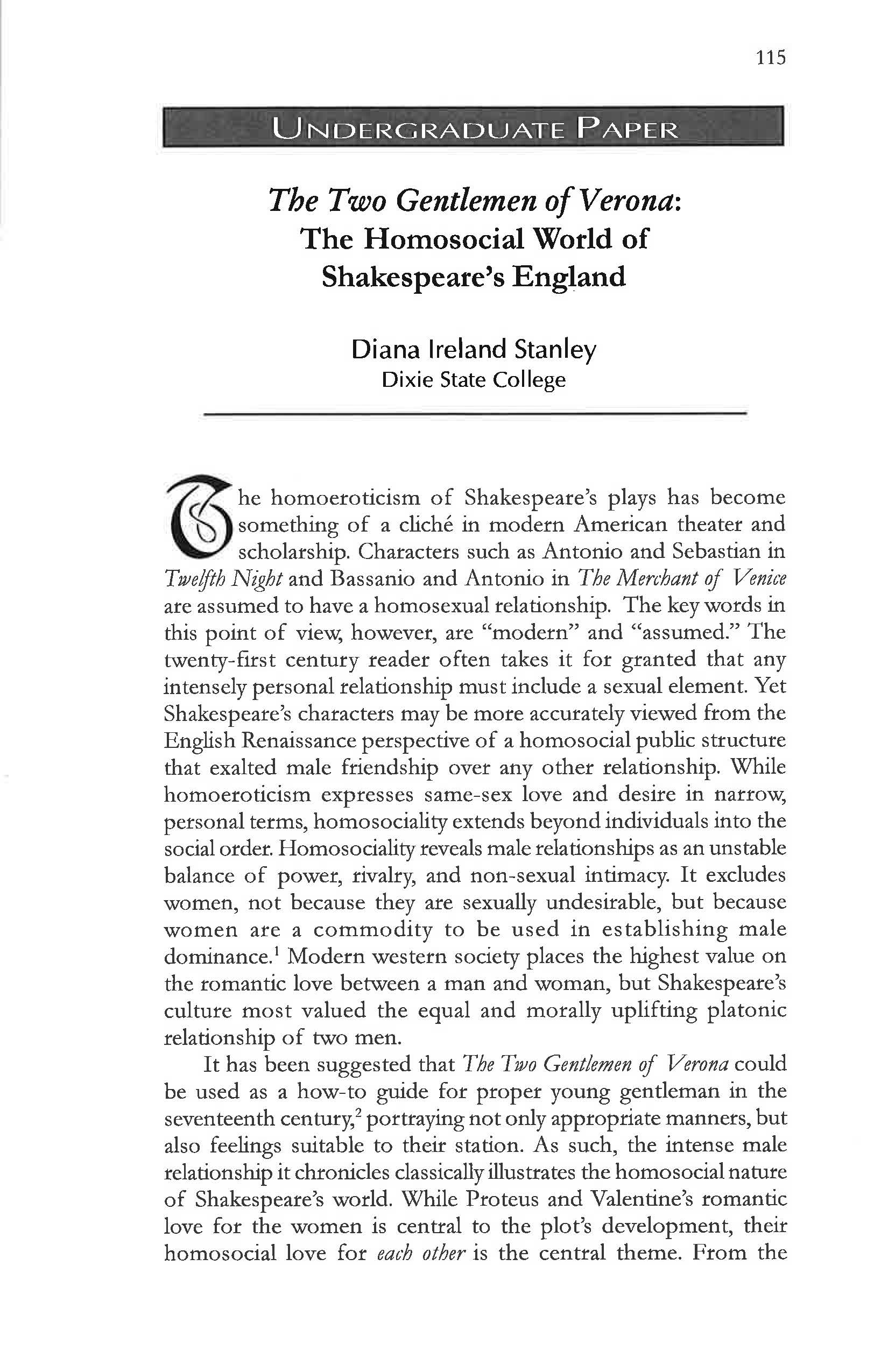The Two Gentlemen of Verona: The Homosocial World of Shakespeare's England
Main Article Content
Abstract
The homoeroticism of Shakespeare’s plays has become something of a cliché in modern American theater and scholarship. Characters such as Antonio and Sebastian in Twelfth Night and Bassanio and Antonio in The Merchant of Venice are assumed to have a homosexual relationship. The key words in this point of view, however, are “modern” and “assumed.” The twenty-first century reader often takes it for granted that any intensely personal relationship must include a sexual element. Yet Shakespeare’s characters may be more accurately viewed from the English Renaissance perspective of a homosocial public structure that exalted male friendship over any other relationship. While homoeroticism expresses same-sex love and desire in narrow, personal terms, homosociality extends beyond individuals into the social order. Homosociality reveals male relationships as an unstable balance of power, rivalry, and non-sexual intimacy. It excludes women, not because they are sexually undesirable, but because woman are a commodity to be used in establishing male dominance.1 Modern western society places the highest value on the romantic love between a man and woman, but Shakespeare’s culture most valued the equal and morally uplifting platonic relationship of two men.
